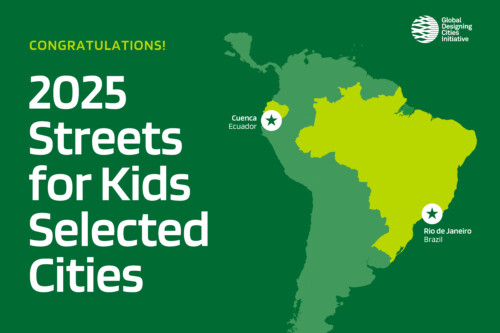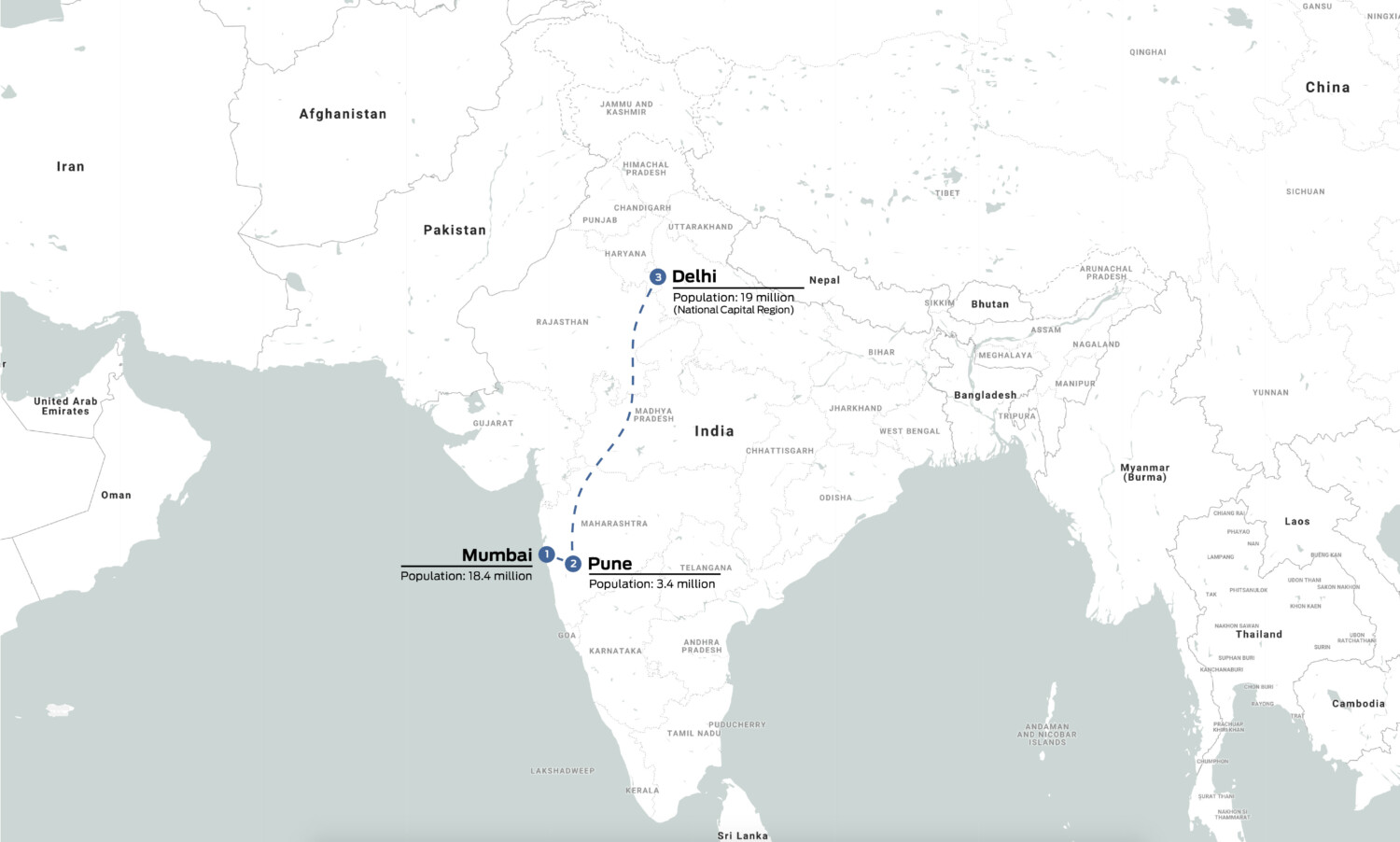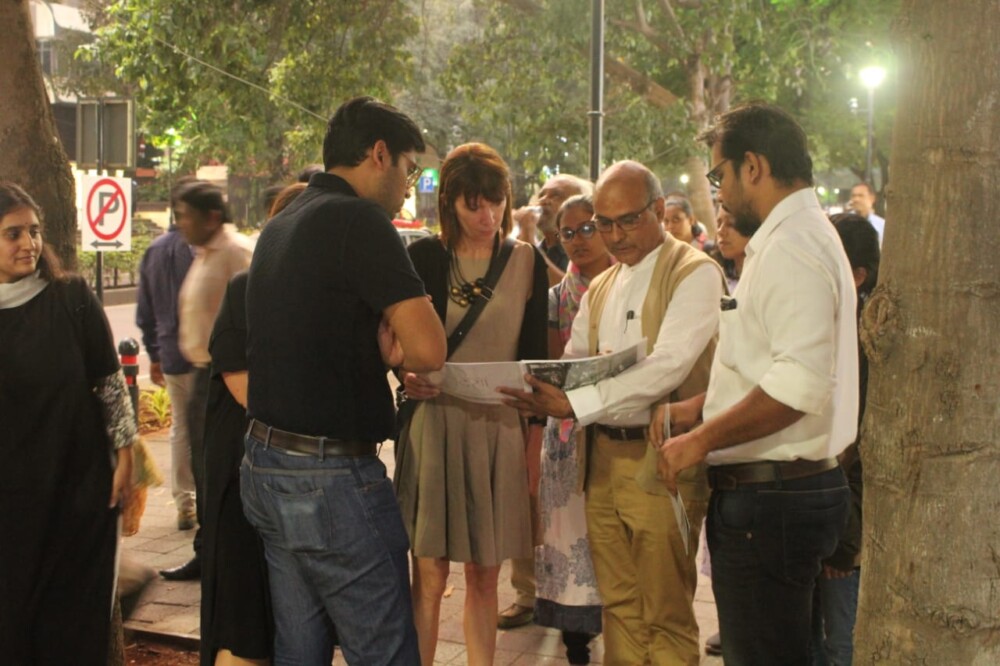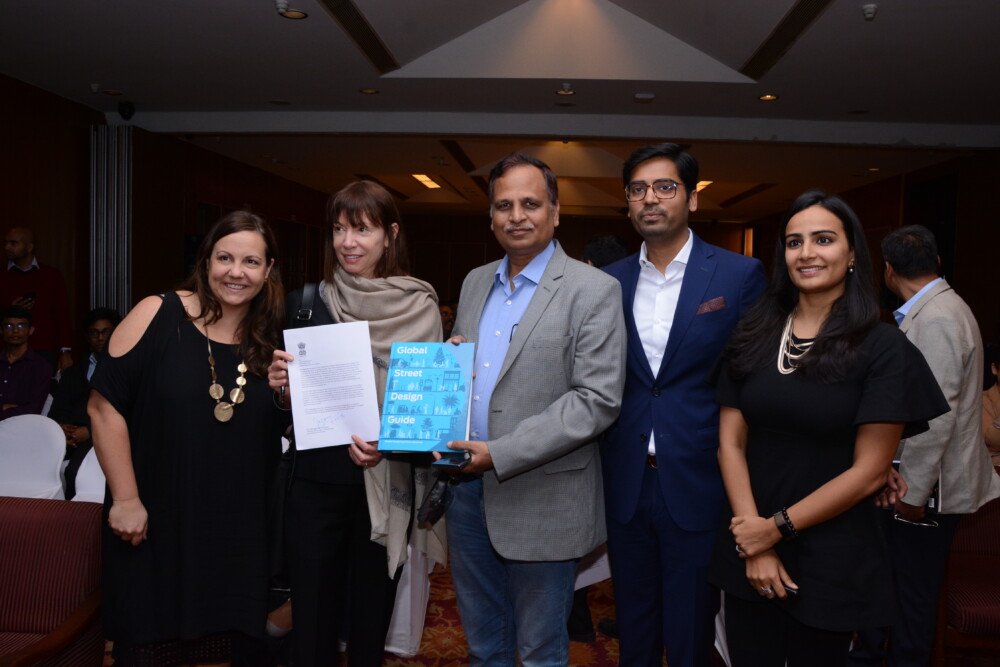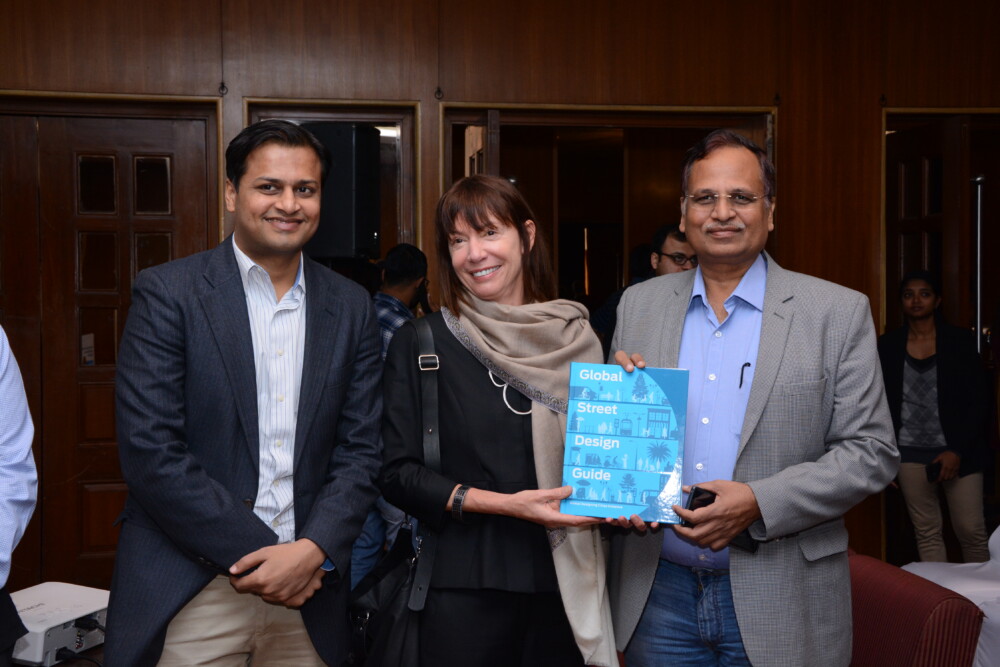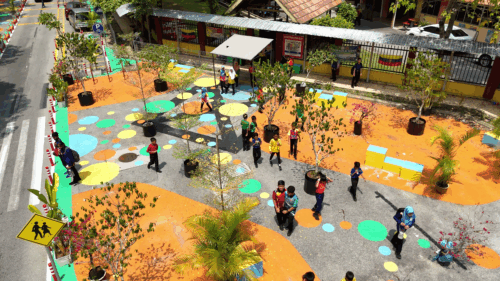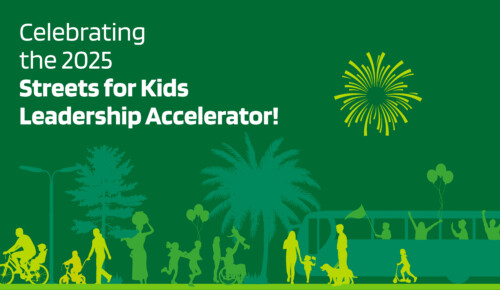NACTO Board Chair Janette Sadik-Khan visited the Indian cities of Mumbai, Delhi, and Pune to teach sustainable and safe mobility lessons from New York City and the Global Street Design Guide (GSDG). All three cities have now endorsed the GSDG .

India has the highest share of road fatalities globally, with over ten percent of the world’s 1.35 million road deaths, annually. As the country continues to urbanize, road safety is a growing concern. In our work in India and worldwide, NACTO-GDCI continues to focus on safe and sustainable mobility choices for all.
Under the Bloomberg Initiative for Global Road Safety (BIGRS), NACTO-GDCI has been providing technical support to the city of Mumbai, while Bloomberg Philanthropies has also been working at the national policy level to address the need for immediate road safety measures with the help of several advocacy groups and organizations.
Through this lens, NACTO-GDCI Board Chair Janette Sadik-Khan visited India last month to share insights from her time as New York City Commissioner of Transportation and her work around the world with Bloomberg Associates. The three-city tour of Mumbai, Delhi, and Pune aimed to inspire leaders, inform practitioners, empower advocates and communities to build a sustainable vision for their streets, and teach tools to transform them. Under the BIGRS program, NACTO-GDCI has partnered with the city of Mumbai for the past several years, and we were excited to also work with Delhi and Pune on this trip.
The first event, “Reclaiming Streets for Mumbai,” followed the city’s first set of road safety campaigns the previous week. This reiterated the importance of shaping our built environment as part of a safe systems approach, which encourages lower speeds to accounts for inevitable human error. The Additional Municipal Commissioner at the Municipal Corporation of Greater Mumbai (MCGM) officially endorsed the Global Street Design Guide (GSDG), joining a network of visionary leaders from around the world. Sadik-Khan and the NACTO-GDCI team also also shared the proposals for the transformation of Mumbai’s most iconic crossroads at CSMT junction. Our team will be working with MCGM and the Mumbai Traffic Police Branch over the next few months to realize these designs and evaluate their impacts. More information about this project can be found here.
In Pune, Sadik-Khan and NACTO-GDCI staff visited exciting projects on the city’s streets, which are led by local consultants like Prasanna Desai Architects and Oasis, advocated for by groups like Parisar, and implemented by the Pune Municipal Corporation. These visits, importantly, showcased local best practices to use as inspiration in other Indian cities. Pune was the first Indian city to endorse the GSDG and continues to implement great design strategies. NACTO-GDCI led a hands-on workshop on the GSDG with over 70 city engineers and consultants, and Sadik-Khan spoke to a 400-person audience on inspirational lessons from New York City and the GSDG.
During the final visit of the trip, Delhi endorsed the GSDG to become the Guide’s 90th endorsement. Sadik-Khan, in conversation with Minister Satyendar Jain of the city’s Design and Development Commission and Piyush Tiwari of Save Life Foundation, discussed the possibilities of implementing the GSDG’s recommendations on the city’s streets. We hope that the endorsements and commitments of Delhi, Pune, and Mumbai will encourage India’s urbanizing cities to adopt the GSDG as guidance to reclaim their streets to be safe, sustainable, and suitable for people of all ages and abilities.
